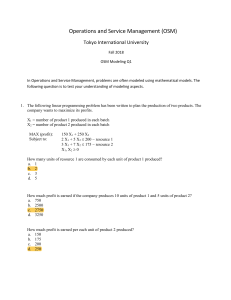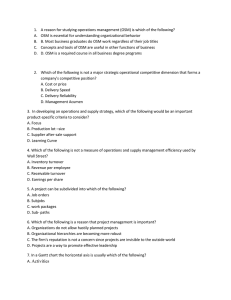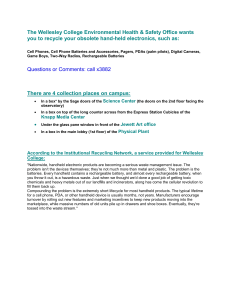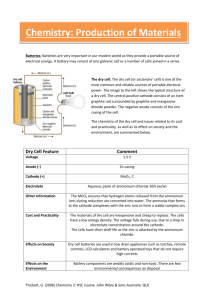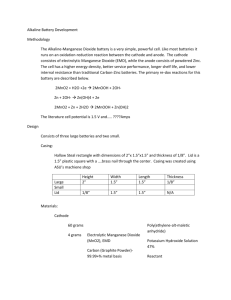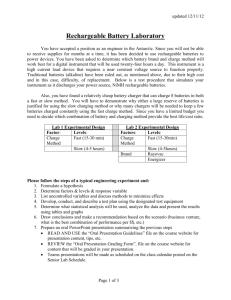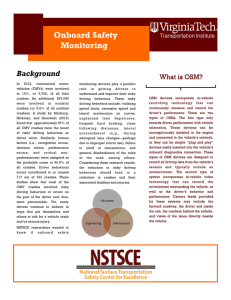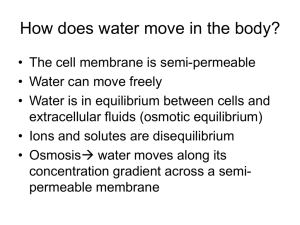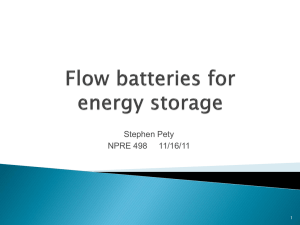OSM-Oxygen Selective Membrane for Rechargeable Zinc
advertisement
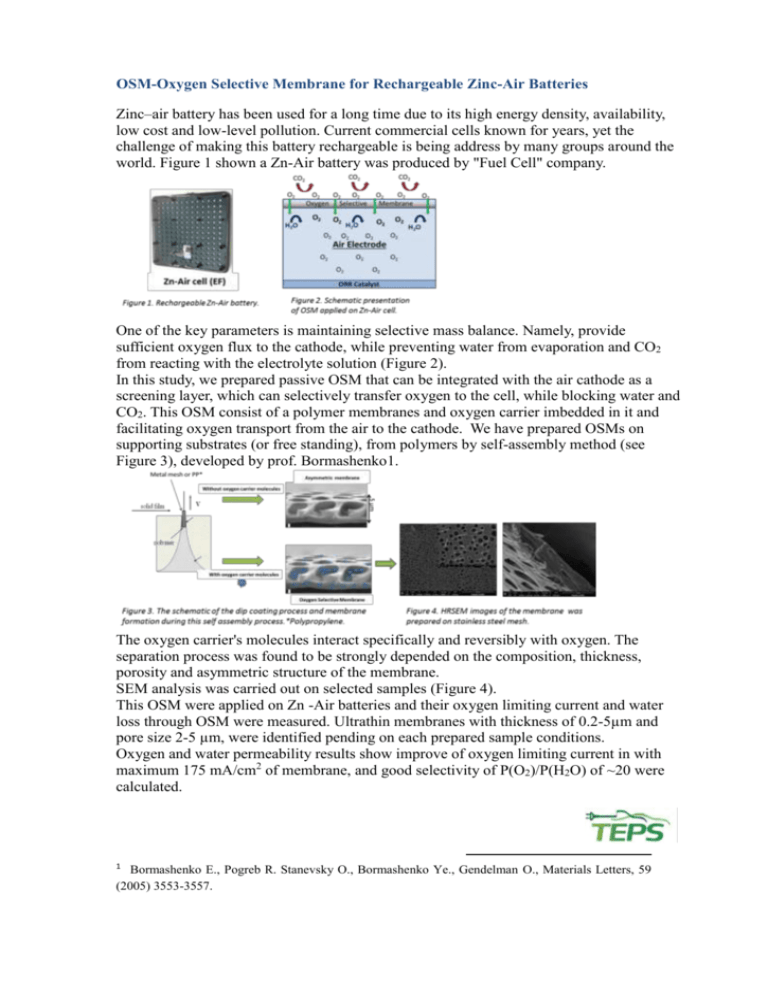
OSM-Oxygen Selective Membrane for Rechargeable Zinc-Air Batteries Zinc–air battery has been used for a long time due to its high energy density, availability, low cost and low-level pollution. Current commercial cells known for years, yet the challenge of making this battery rechargeable is being address by many groups around the world. Figure 1 shown a Zn-Air battery was produced by "Fuel Cell" company. One of the key parameters is maintaining selective mass balance. Namely, provide sufficient oxygen flux to the cathode, while preventing water from evaporation and CO2 from reacting with the electrolyte solution (Figure 2). In this study, we prepared passive OSM that can be integrated with the air cathode as a screening layer, which can selectively transfer oxygen to the cell, while blocking water and CO2. This OSM consist of a polymer membranes and oxygen carrier imbedded in it and facilitating oxygen transport from the air to the cathode. We have prepared OSMs on supporting substrates (or free standing), from polymers by self-assembly method (see Figure 3), developed by prof. Bormashenko1. The oxygen carrier's molecules interact specifically and reversibly with oxygen. The separation process was found to be strongly depended on the composition, thickness, porosity and asymmetric structure of the membrane. SEM analysis was carried out on selected samples (Figure 4). This OSM were applied on Zn -Air batteries and their oxygen limiting current and water loss through OSM were measured. Ultrathin membranes with thickness of 0.2-5µm and pore size 2-5 µm, were identified pending on each prepared sample conditions. Oxygen and water permeability results show improve of oxygen limiting current in with maximum 175 mA/cm2 of membrane, and good selectivity of P(O2)/P(H2O) of ~20 were calculated. 1 Bormashenko E., Pogreb R. Stanevsky O., Bormashenko Ye., Gendelman O., Materials Letters, 59 (2005) 3553-3557.
